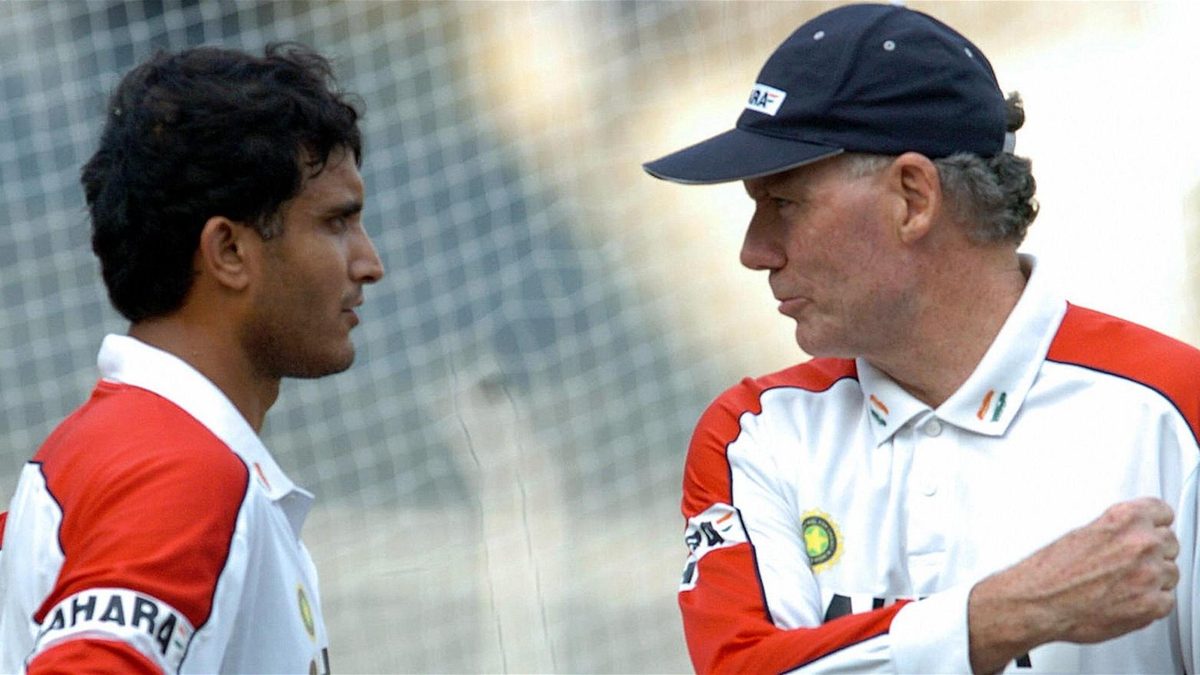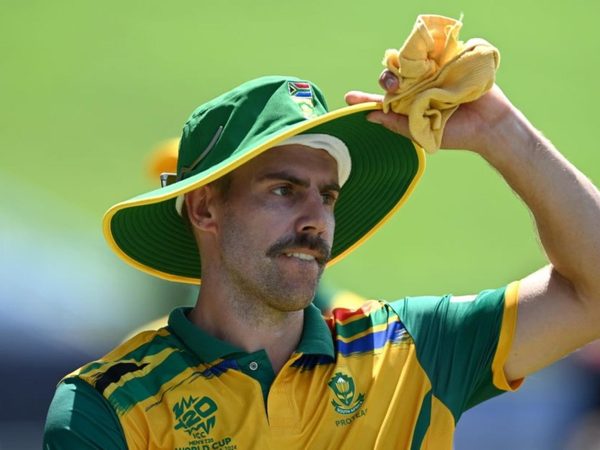
Speaking on Cricket Life Stories, Greg Chappell has revisited his stint as India head coach, which contained significant controversy as he clashed with Sourav Ganguly, who he removed as captain and then dropped from the side altogether.
Overall, however, Chappell looks back on his time in charge fondly.
“It was an amazing experience,” he said. “Like most things in life there’s some good memories and some less good memories, but overwhelmingly the experience was wonderful. My wife came with me to India, we had a lovely time, we stayed on in India for 18 months after that as I worked with Rajasthan to set up their cricket academy and running that for 18 months. It was three and a half years of the most amazing life experience.”
However, he also conceded that they were some tough times in one of the most high-profile jobs in cricket.
“The two years with India was challenging on every front,” he said. “The expectations were ridiculous. It was as though people expected you to have a magic wand that you could come in and wave and everything would be fine. It was far, far from that.”
Much of this came down to a turbulent relationship with Ganguly. Chappell, who explained how he owed his appointment, in part, to Ganguly’s backing, first took charge of India for the 2005 Indian Oil Cup. With Ganguly suspended for the opening games for over rate infringements, Rahul Dravid led the side, and India were beaten in the final. On India’s tour of Zimbabwe, Chappell and Ganguly, who is now BCCI president, butted heads. Chappell asked Ganguly to step down from the captaincy and suggested he wasn’t in India’s best XI. Ganguly responded by threatening to fly home from the tour. Reports emerged that Chappell had threatened to resign, though he denied this.
In the end, Ganguly stayed on as captain, and made his first Test hundred in nearly two years in an innings win. Chappell then said his aim was “motivating Sourav for the Bulawayo Test match.”
In October, Ganguly missed the first four ODIs of a seven-match series against South Africa with injury, and with Dravid leading the team successfully in his absence, the left-hander was excluded from the squad even after recovering. Anti-Chappell protests were held at Kolkata. Ganguly remained with the Test side to face Sri Lanka, with chairman of selectors Kiran More calling him a “bowling all-rounder”, and thus leaving out Zaheer Khan, but Dravid remained captain. By the third Test, Ganguly was dropped, with Mohammad Kaif and Yuvraj Singh picked at his expense.
“Some of the issues were around Sourav, obviously,” said Chappell. “Sourav, as captain, didn’t particularly like working hard. He wasn’t particularly looking to improve his cricket. He wanted to stay in the team and be captain so he could control things. It was challenging. It was wonderful working with Tendulkar and Sehwag and Dravid and Kumble and some of the young players, Dhoni came into the side at that point.”
Ganguly was in and out of the side thereafter, with Chappell proud of his side’s record in that time.
“For 12 months we had an extremely good run,” he said. “We were coming up to a World Cup. India’s record in one-day cricket up to that point had been disappointing. We focussed on one-day cricket because the World Cup was coming up. Ganguly was dropped as captain, Dravid became captain and was really, he was invested in India becoming the best team in the world. Sadly not everyone in the team had the same feeling. They were just wanting to concentrate on being in the team.
“So it was trying to change some of the thought processes, change some of the culture around the way they trained, which meant being demanding of players, changing the way they went about their preparation and so on. The board had employed me for that reason, they encouraged me to keep working in that area. But there was a bit of resistance from some of the senior players because they could see they were coming to the end of their careers and they weren’t necessarily looking to improve as players.”
It wasn’t only Ganguly who made known his feelings on Chappell, with Sachin Tendulkar and Zaheer Khan both speaking out against him since.
“Our fielding wasn’t good enough, the fitness levels weren’t good enough,” said Chappell. “Bringing about change often creates tension, and there was some tension around. Obviously when Sourav got dropped from the team, we got some attention from the players because they realised, if he can go, anyone can go. And for 12 months we had a very successful period. We won 17 games in a row chasing, and chasing hadn’t been part of the success of Indian cricket.”
Ganguly’s form improved, and he was recalled for the 2007 World Cup. India were eliminated in the opening round, with a shock defeat to Bangladesh proving crucial, and Chappell resigned as head coach not long after. “The resistance started to build,” he said. “Ganguly came back into the team, and it became untenable pretty much. The message came back loud and clear: We don’t want to change. And with that in mind, despite the face that the board offered me another contract, I decided not to continue. I didn’t need the stress and strain that came from being in that environment.”
However, Chappell stressed that he’s proud of what he achieved, and particularly of widening the pool of players India had to pick from, and the areas from which those players hailed. “When I look back on it, I look back on it with great affection,” he said. “I have some wonderful friends from that time in India. We as a couple have some wonderful friends in India from that time. I have a lot of respect from the people of India who understand what we tried to do in that period. And I think, probably the biggest legacy was that we picked players from the non-traditional areas of India.
“Up until that point, the Indian players came from Mumbai, Bangalore, Chennai, Delhi and Kolkata, and now the Indian players come from all over India and are a true representation of their country, and the team has become a team that all of India can be proud of all of the time, and I think that’s what we were trying to achieve in my time there, and I think some of the changes that we made have gone on and been a part of what Indian cricket has become since.”








